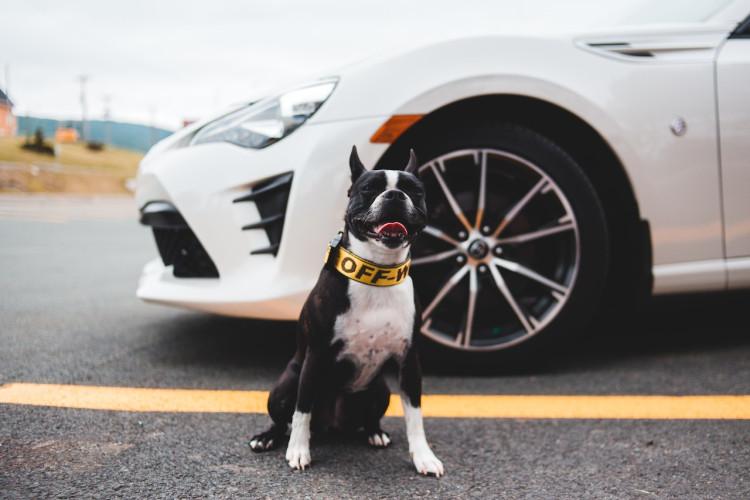
Tibetan Mastiff
USD $2500-$3500 Price Avg.
Working Dogs
Group
Purebred
Breed Type
Large
Size
10-14 years
Lifespan
Breed Information
| Group | Working Dogs |
|---|---|
| Popularity/Rank | 153 |
| Origin | Tibet |
| Other Names | Dok-Khyi, Tsang-khyi |
| Breed Type | Purebred |
| Price (Avg.) |
USD $2500-$3500
How much does it cost to buy a Tibetan Mastiff? Tibetan Mastiff are usually priced differently from breeder to breeder and from place to place. As a rough guide, you can expect to pay between $2500 to $3500 if you purchase your dog from a reputable breeder. The price will increase if the dog has a fantastic pedigree. Dogs that already have basic training maybe even more expensive. But, most Tibetan Mastiffs can be adopted through a shelter for a lower fee. |
| Size | Large |
| Weight | 140-170 pounds (64-78 kg) |
| Height | 25-28 inches (61-71 cm) |
| Lifespan | 10-14 years |
| Recognized by |
AKC, FCI
The American Kennel Club in 2006 as a Working breed. And FCI in the Pinscher and Schnauzer - Molossoid and Swiss Mountain and Cattledogs group, in the Molossian type s |
| Purpose | Guard Dog, Herder |
| Date of Origin | Ancient Times |
| Ancestry | Mastiff, Tibetan Wolves |
Appearance & Maintenance
| Coat | Hard, Thick |
|---|---|
| Coat Colors | Black, Blue, Brown, Gray, Red, Tan |
| Grooming Level | |
| Shedding Level | |
| Eye Color Possibilities | Brown |
| Nose Color Possibilities | Black |
| Coat Color Possibilities | Black, Blue, Brown, Red |
| Coat Length | Large |
| Coat Density | Dense |
| Coat Texture | Straight |
| Recommended Brushes | Comb, Dematter, Nail Clipper, Pin Brush |
| Brushing Frequency | Weekly |
Breed Characteristics
| Temperament | Aloof, Brave, Cool, Courageous, Daring, Defensive, Loyal, Protective, Strong, Stubborn, Willed |
|---|---|
| Intelligent | |
| Trainability | |
| Playfulness | |
| Sensitivity Level | |
| Affection Level | |
| Social Interaction Required | |
| Barking | |
| Watchdog Ability | |
| Territorial | |
| Biting Force | High |
| Mouthiness | |
| Impulse to Wander or Roam | |
| Prey Drive | |
| Adaptability | |
| Tolerates Being Left Alone | |
| Fighting Dog | Not really |
Good & Friendly with
| Apartment Life Friendly | |
|---|---|
| Stranger Friendly | |
| Kid-Friendly | |
| Cat Friendly | |
| Dog Friendly | |
| Office Friendly | No |
| Senior Citizens Friendly | |
| Pet Friendly | |
| Friendly with First Time Owners | No |
| Service Dog | Not really |
| Therapy Dog | Not really |
| Detection, Sniffer or Security Dog | Not really |
| Search and Rescue Dog (SAR) | Not really |
| Boat Dog | Not really |
| Cart Pulling or Drafting Dog | Yes |
Health Elements
| Health Issues | |
|---|---|
| Health Problems | Autoimmune Hypothyroidism, Canine Inherited Demyelinative Neuropathy, Elbow Dysplasia, Hip Dysplasia, Osteochondrosis Dissecans, Panosteitis |
| Hypoallergenic | No |
| Energy Level | |
| Exercise Required | |
| Sleeping Required | |
| Weight Gain Potential | |
| Weather & Climate | Prefers cold weather |
| Stinkiness | High |
| Drooling tendency | |
| Activity Level | Moderate |
| Rec. Walk Mileage Per Week | 8 miles |
| Minutes of Activity Per Day | 60 minutes |
Food & Costing
| Avg. Daily Food | 6 to 8 cups of high-quality dry food a day, divided into two meals. |
|---|---|
| Cups Per Day | 4 cups |
| Daily Cost | $2.75 - $3.00 |
| Monthly Cost | $80.00 - $90.00 |
Reproducibility
| Gestation Duration | 60-64 days |
|---|---|
| How often can the Tibetan Mastiff have a litter? | Once a year. |
| Litter Size | 5-12 puppies (Once a year.) |
Description
The Tibetan Mastiff is a large, powerful dog that has been used for centuries as a guard and protector of livestock and property. This breed is known for its impressive size, strength, and loyalty. The Tibetan Mastiff is an ancient breed that originated in the Himalayan Mountains of Tibet. It has been used as a guard dog for centuries and is still popular today as a family pet.
The Appearance of the Tibetan Mastiff dog is quite impressive with its thick double coat that can range from black to shades of red or gold. The coat can be long or short depending on the individual dog's genetics. The head is broad with small ears that are set high on the head. The muzzle is long and strong with dark eyes that have an alert expression. The tail curls over the back when relaxed but can be carried straight when excited or alert.
The Lifespan, Size, Weight, and Colors of the Tibetan Mastiff vary depending on their genetics but generally they live between 10-14 years old and weigh between 80-160 pounds (36-73 kg). They stand at 24-30 inches (61-76 cm) tall at the shoulder when fully grown. Common colors include black, brown, red/golden/tan/sable/silver/white combinations or solid colors such as black & tan or red & gold etc..
The Personality of the Tibetan Mastiff dog is loyal and devoted to their family but can be aloof towards strangers until they get to know them better. They are intelligent dogs who need mental stimulation in order to stay happy and healthy so it’s important to provide them with plenty of activities such as obedience training or agility courses in order to keep them occupied throughout their life span.
Tibetan Mastiffs are friendly towards other dogs if socialized properly from an early age however they may not always get along well with other animals due to their natural instinctive behavior which makes them territorial around unfamiliar animals such as cats or rabbits etc.. They also tend to be good around children if raised together from puppyhood however it’s important not to leave young children unsupervised around this breed due to their size which could cause accidental injury if not handled correctly by both parties involved in any interaction between child & dog etc..
The Temperament of the Tibetan Mastiff dog tends towards being independent yet loyal which makes them great guard dogs who will protect their family without hesitation if needed however they do require firm leadership from an experienced owner who understands how best handle this type of breed in order for it reach its full potential within any given situation etc..
The Health of the Tibetan Mastiff Dog tends towards being generally good although like all breeds there are certain health issues associated with this particular type such as hip dysplasia, eye problems & bloat so it’s important for owners ensure regular check ups at vet clinics in order maintain optimal health levels throughout life span etc..
Finally Adaptability level wise these dogs tend do well living both indoors & outdoors providing they have access plenty exercise opportunities either way however due size these dogs may not suitable those living smaller homes apartments unless there enough space accommodate larger breeds comfortably without causing any disruption daily routines etc..
Overall benefits having one these majestic creatures your home include having loyal companion who will protect you your loved ones no matter what plus added bonus having beautiful looking pet show off friends family members alike!
History
The Tibetan Mastiff is a large, powerful dog breed that originates from the Tibetan Plateau in Asia. The breed is also known as the Do-khyi, which means "home guard" or "watchdog" in Tibetan. The Tibetan Mastiff was used by nomadic tribes to protect their herds and property from predators and thieves. The breed was virtually unknown outside of Tibet until the early 1800s, when British explorers first began to document them.
The Tibetan Mastiff nearly became extinct in the early 20th century due to a combination of factors, including political turmoil in Tibet, cross-breeding with other dog breeds, and disease. However, the breed was saved by a handful of dedicated fanciers who worked to preserve its unique qualities. In recent years, the Tibetan Mastiff has experienced a resurgence in popularity, thanks in part to its celebrity fans such as Oprah Winfrey and Hugh Jackman.
The exact ancestry of the Tibetan Mastiff is unknown, but it is believed to be one of the oldest dog breeds in existence. The breed is thought to be a descendant of the ancient mastiffs that were brought to Tibet by nomadic tribes over 2,000 years ago. From Tibet, the breed spread to China, Mongolia, Nepal, and India. In 1931, the first Tibetan Mastiffs were brought to England by Frank Copping; however, it would be several decades before they became widely known outside of Asia.
Today, the Tibetan Mastiff is recognized as a distinct breed by major kennel clubs around the world including the American Kennel Club (AKC) and United Kennel Club (UKC). The AKC first recognized the breed in 2006; however it remains relatively rare in North America with only a few hundred individuals currently registered.
Tibetan Mastiff Posts
Explore Tibetan Mastiff's photos, videos, activities, stories, and facts.




